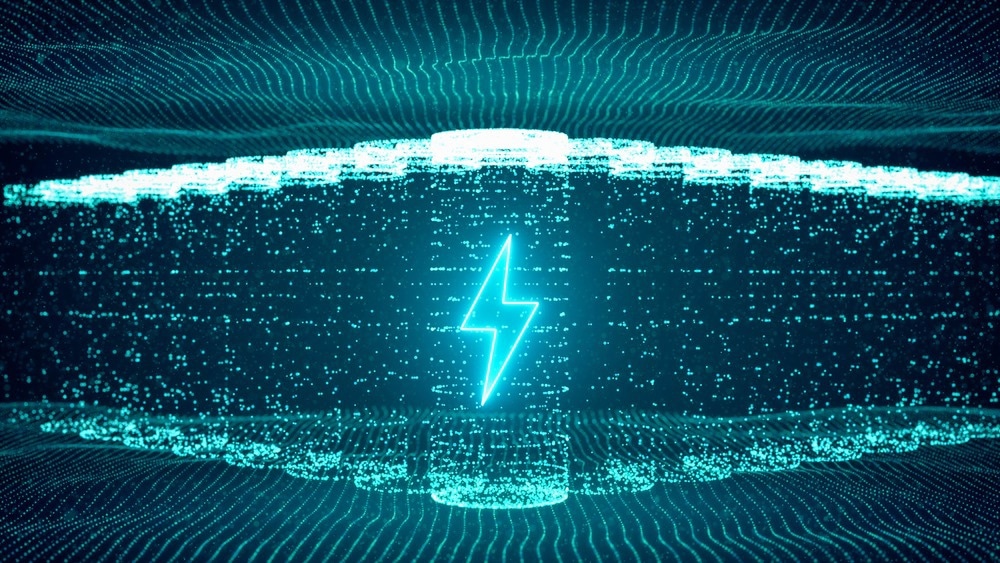A pre-proof paper from the journal Energy Storage Materials provides a critical and thorough assessment of the progress in the microfabrication technologies of MXenes for micro-scale energy storage devices (MESDs) such as micro-supercapacitors and micro-batteries.

Study: Recent Status and Future Perspectives of 2D MXene for Micro-supercapacitors and Micro-batteries. Image Credit: Black_Kira/Shutterstock.com
Two-dimensional MXene-based composites hold significant promise for MESD applications in portable and nanoscale electronics. Several microfabrication methods have been used so far to create MXene-based microelectrodes for MESDs.
Different approaches influence not only device layout but also the morphology of MXene electrodes and the electrochemical effectiveness of micro-supercapacitors and micro-batteries.
Microscale Energy Storage Devices (MESDs) - The Future of Electronics
The introduction of smart electronics to realize the ambition of "the Internet of everything," which is characterized by integrative, wearable, and multipurpose microelectronics, has caused the rapid growth of compatible microscale energy storage devices (MESDs) such as micro-supercapacitors (MSCs) and micro-batteries (MBs).
In recent years, MESDs have been heavily promoted for applications in microscale monitoring systems, micro/nano-robots, self-powered delivery systems, implanted medical devices, patient monitoring, and GPS systems. As a result, the desire to reduce the size of electronics from the meter to the micro and nano level is boosting the urgent need for micropower resources.
Limitations of Traditional Energy Storage Devices
The conventional electrochemical energy storage devices (EESDs) feature a sandwich-like construction made of two electrodes, an electrolyte, and a divider, with specific structural and size limitations. To address this problem, it is critical to provide high-performance MESDs with great flexibility, adaptability, and interoperability with microelectronics.
Micro-supercapacitors and micro-batteries are representative MESDs that can be attached directly with microelectronics as individual microscale sources of power or as a complement to nano-sized power conversion modules such as solar panels and nano-generators, alleviating the dislocation, predictability, and randomness of sustainable solar and mechanical power.
MXenes as Electrode Materials for MESDs
Electrode materials, being a crucial component of MESDs, play a critical role in deciding the overall effectiveness. As a result, unique high-performance electrode substances with good conductivities and substantial charge storage capacity are required.
MXene is recognized as a possible electrocatalyst for micro-supercapacitors and micro-batteries because of its special characteristics, such as high electrical conductivity, rapid electron transmission, ionic dispersion, excellent wettability, elevated thermal reliability, controllable interlayer distances, and configurable morphology.
Microfabrication of MXene-based Micro-supercapacitors (MSCs)
As a special type of MESD, micro-supercapacitors have the blended benefits of a shortened ion transit pathway, higher energy density, and a longer operational lifecycle than conventional supercapacitors. It not only solves the problem of electrochemical capacitors' low energy density , but it can also be combined with nano-electronics as a source of power, producing efficient energy peaks quickly.
MXenes considered exciting electrode materials for application in micro-supercapacitors. MXenes are generally ultrathin, have a high stacking density, and are mechanically stable. This is beneficial for both electrode material and current collectors, resulting in micro-supercapacitors with low weight, stretchability, and ease of integration.
For high-efficiency energy storage devices, configurable microfabrication of micro-supercapacitors involving good geometric features, performance, and integration is required. The wet chemical etching process is currently the primary MXene synthesis technique. Filtration, stamping, printing, coating, and deposition are some other microfabrication strategies for MXene-based supercapacitors.
MXene-based Micro-batteries (MBs): Development and Challenges
The production of adaptable and compact MBs is critical owing to the pressing need to integrate microelectronic systems with small-size batteries. Large-scale MB manufacture necessitates outstanding compatibility and downsizing, requiring the creation of multilayer MBs with adjustable geometries.
However, producing long-lasting MBs with relatively high load capacity, large capacity, and energy density is difficult. The design and implementation of electrode materials with higher ion-electron conductance are essential to controlling the performance of MBs in this respect.
MXenes have strong ionic conductance, adaptability, and functional quality, making them suitable materials for micro-battery development.
Future Outlook
The issues associated with MXene's inherent features must be resolved, increasing efficient ion absorption, intercalation, and electron transfer, improving the electrolytic connection between electrode and electrolyte. Creating novel MXene materials is an important step in improving the effectiveness of micro-supercapacitors and micro-batteries.
The microfabrication techniques for designing microelectrodes are also critical for producing high-performance MXene-based MESDs. A proper equipment layout is necessary to further minimize the size of MESDs without impacting the performance of the device. The demonstration of completely printed MESDs is currently quite restricted, but this will be a key research path in the future.
Apart from pushing the frontiers of high electrochemical efficacy, it is expected that MXene-based micro-supercapacitors and micro-batteries would acquire intelligent multi-functionalities, accelerating their applicability in various electronics-based sectors.
Reference
Zhu, Y. et al. (2022). Recent Status and Future Perspectives of 2D MXene for Micro-supercapacitors and Micro-batteries. Energy Storage Materials. Available at: https://doi.org/10.1016/j.ensm.2022.06.044
Disclaimer: The views expressed here are those of the author expressed in their private capacity and do not necessarily represent the views of AZoM.com Limited T/A AZoNetwork the owner and operator of this website. This disclaimer forms part of the Terms and conditions of use of this website.